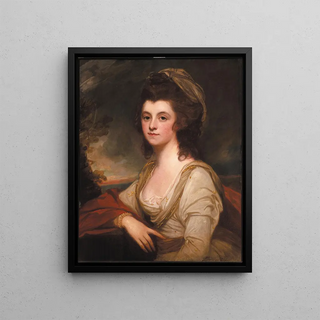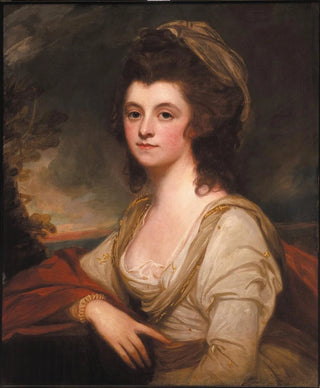Art print | Portrait of Lady Bentinck - George Romney


View from behind

Frame (optional)
Introduction captivante
The "Portrait of Lady Bentinck" by George Romney is an iconic artwork that captures the very essence of elegance and refinement of the 18th century. This painting, an integral part of British art history, showcases not only the artist's technical skills but also a deep understanding of the psychological nuances of his subjects. Contemplating this piece transports you to a world where beauty and social status intertwine, a world where every detail is carefully crafted to evoke an atmosphere of timeless grace. The art print of this piece allows appreciation of its rich colors and delicate features, while offering a window into a bygone era.
Style and uniqueness of the work
Romney's work stands out for its unique style, blending realism and idealization. In the "Portrait of Lady Bentinck," he manages to capture not only the physicality of his model but also her character and personality. The flowing drapes of her dress, the soft light caressing her face, and the subtly blurred background create a dreamlike atmosphere that seems to transcend time. The color palette, dominated by warm and rich tones, helps establish an intimacy between the viewer and the subject. Each brushstroke reveals impressive technical mastery, demonstrating Romney's skill in playing with light and shadows. This portrait is not just a representation; it is an invitation to delve into Lady Bentinck's inner world, to feel her emotions, and to share a moment of her life.
The artist and his influence
George Romney, born in 1734 in Kendal, is one of the most influential painters of his time. Trained in the tradition of classical portraiture, he established himself on the London art scene thanks to his exceptional talent and ability to capture the spirit of his era. His works, often commissioned by the aristocracy, reveal a particular sensitivity to the aspirations and desires of high society. Romney not only contributed to the evolution of British portraiture but also paved the way for many artists who followed in his footsteps. His style, characterized by an approach

Matte finish

View from behind

Frame (optional)
Introduction captivante
The "Portrait of Lady Bentinck" by George Romney is an iconic artwork that captures the very essence of elegance and refinement of the 18th century. This painting, an integral part of British art history, showcases not only the artist's technical skills but also a deep understanding of the psychological nuances of his subjects. Contemplating this piece transports you to a world where beauty and social status intertwine, a world where every detail is carefully crafted to evoke an atmosphere of timeless grace. The art print of this piece allows appreciation of its rich colors and delicate features, while offering a window into a bygone era.
Style and uniqueness of the work
Romney's work stands out for its unique style, blending realism and idealization. In the "Portrait of Lady Bentinck," he manages to capture not only the physicality of his model but also her character and personality. The flowing drapes of her dress, the soft light caressing her face, and the subtly blurred background create a dreamlike atmosphere that seems to transcend time. The color palette, dominated by warm and rich tones, helps establish an intimacy between the viewer and the subject. Each brushstroke reveals impressive technical mastery, demonstrating Romney's skill in playing with light and shadows. This portrait is not just a representation; it is an invitation to delve into Lady Bentinck's inner world, to feel her emotions, and to share a moment of her life.
The artist and his influence
George Romney, born in 1734 in Kendal, is one of the most influential painters of his time. Trained in the tradition of classical portraiture, he established himself on the London art scene thanks to his exceptional talent and ability to capture the spirit of his era. His works, often commissioned by the aristocracy, reveal a particular sensitivity to the aspirations and desires of high society. Romney not only contributed to the evolution of British portraiture but also paved the way for many artists who followed in his footsteps. His style, characterized by an approach






